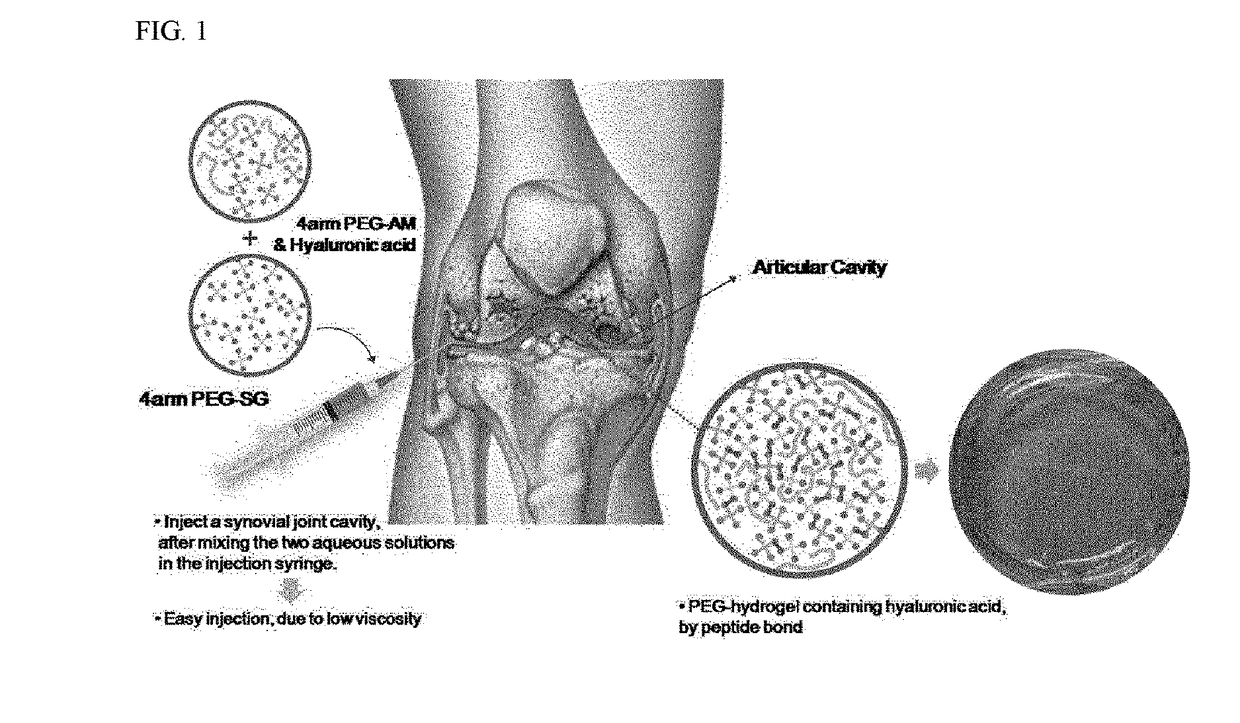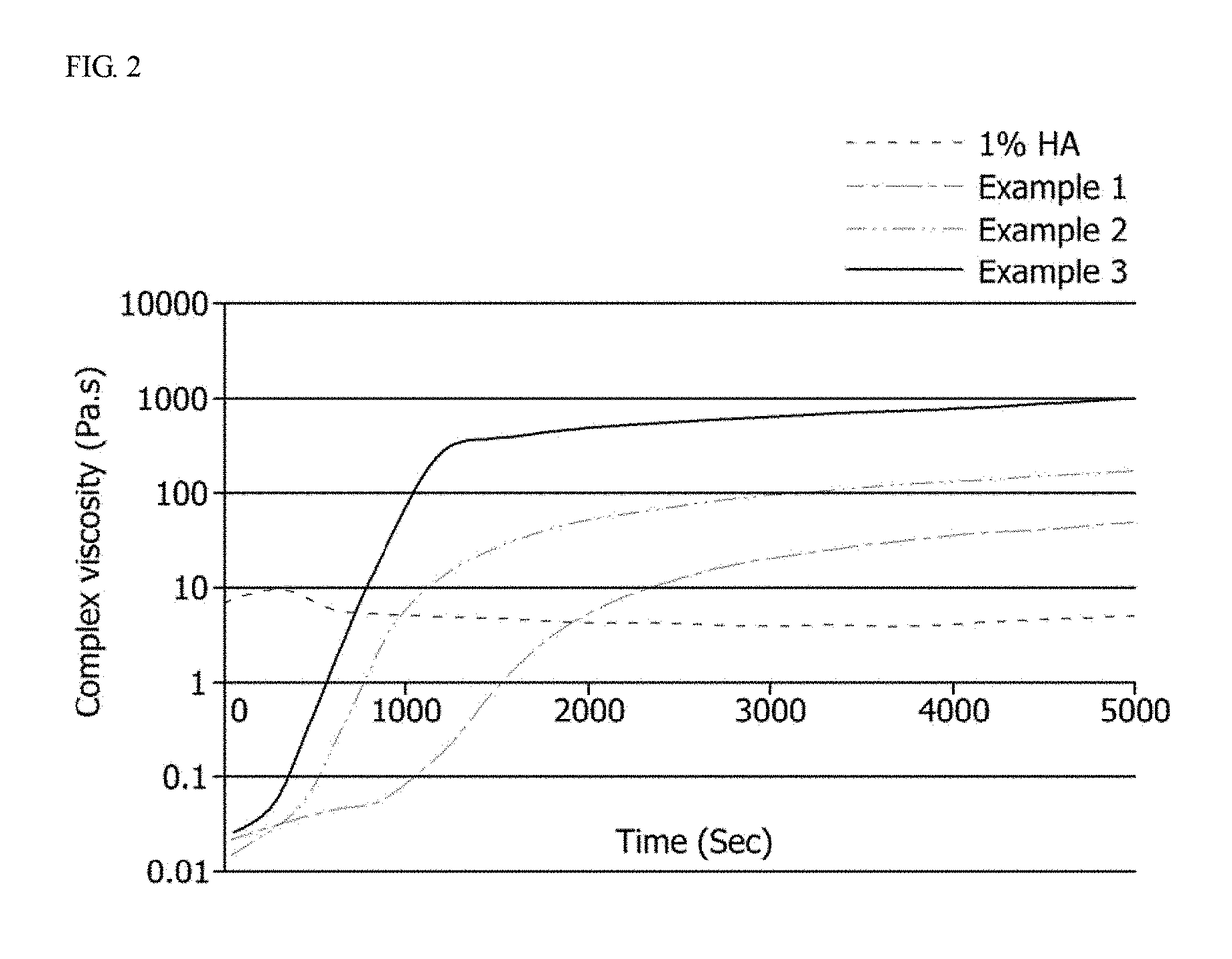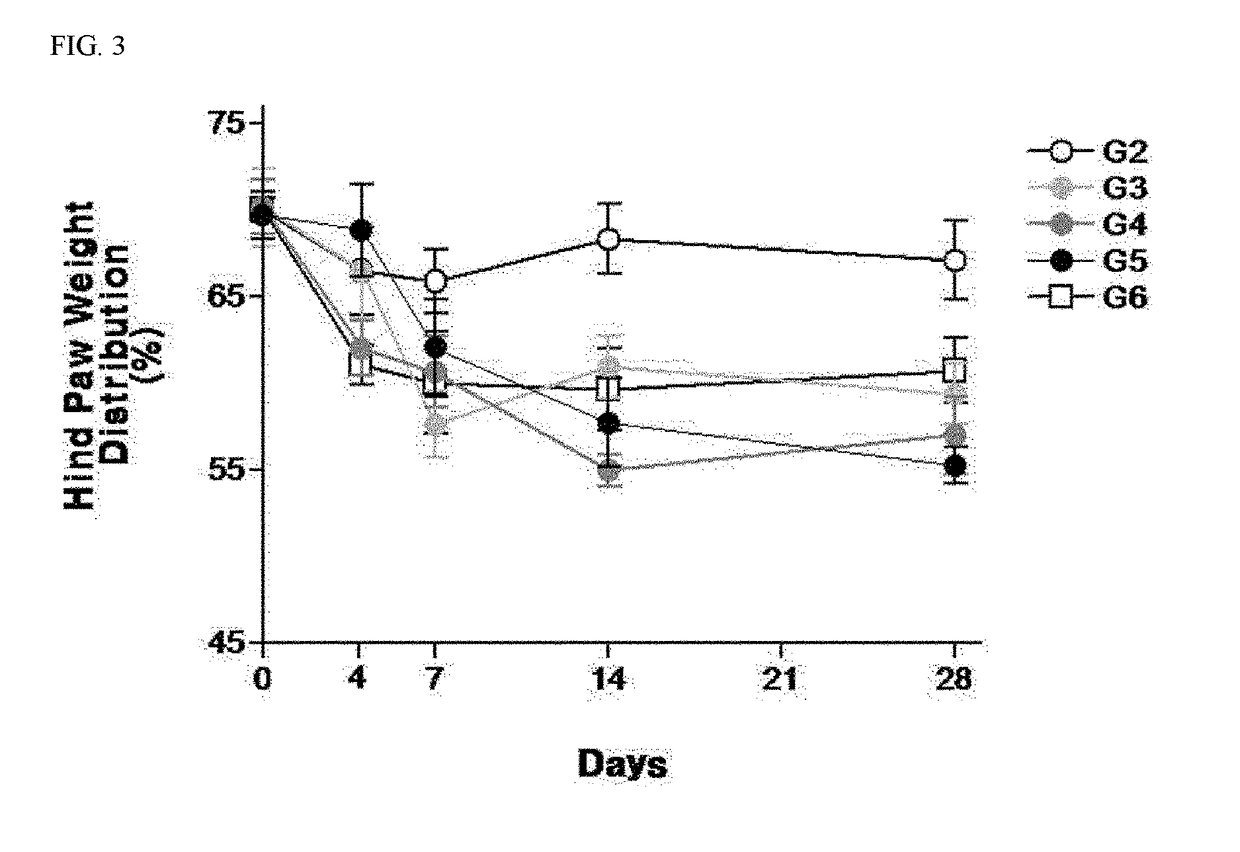Polethylene glycol hydrogel injection
a technology of polyethylene glycol and hydrogel, which is applied in the field of polyethylene glycol hydrogel injection, can solve the problems of reducing the effect of hyaluronic acid degradation, affecting the normal functioning of the body, so as to improve the treatment of various conditions of osteoarthritis, enhance pain relief, and facilitate the administration. excellent biocompatibility and ease of administration
- Summary
- Abstract
- Description
- Claims
- Application Information
AI Technical Summary
Benefits of technology
Problems solved by technology
Method used
Image
Examples
preparation example 1
-Succinimidyl Glutarate (4Arm PEG-SG)
[0065]
[0066]A compound of Structural Formula 2 was dissolved in methylene chloride at room temperature, and then triethylamine was added to the mixture. Glutaric acid anhydride (glutaric anhydride) was added to a reaction solution, and then stirred for 20 to 24 hours at room temperature. Then, the solution was washed with a 14% ammonium chloride solution. Once the liquid phases are separated, the organic phase in the bottom was collected. The aqueous phase was extracted by methylene chloride. The collected organic phase was treated with magnesium sulfate to remove moisture, and then precipitated by diethyl ether after concentrating the solvent. The precipitate was filtered and dried for 24 hours under vacuum at room temperature to yield a compound of Structural Formula 3.
[0067]The compound of Structural Formula 3 was dissolved in methylene chloride, and then N-hydroxysuccinimide (NHS) and dicyclohexyl carbodiimide (DCC) were added. The reaction s...
preparation example 2
-Amine
[0068]
[0069]A compound of Structural Formula 2 was dissolved in methylene chloride at room temperature, and then triethylamine was added to the mixture. P-toluenesulfonyl chloride was added to the reaction solution, and then stirred for 20 to 24 hours at room temperature. Then, the solution was washed with a 14% ammonium chloride solution. Once the liquid phases are separated, the organic phase at the bottom was collected. The aqueous phase was extracted by methylene chloride. The collected organic phase was treated with magnesium sulfate to remove moisture, and then precipitated by diethyl ether after concentrating the solvent. The precipitate was filtered and dried for 24 hours under vacuum at room temperature to yield a compound of Structural Formula 5.
[0070]The compound of Structural Formula 5 was added to 28% ammonia, and stirred for 2 days at room temperature. Then, an organic phase was extracted twice after adding methylene chloride to the reaction solution. The collect...
PUM
| Property | Measurement | Unit |
|---|---|---|
| Mass | aaaaa | aaaaa |
| Mass | aaaaa | aaaaa |
| Viscosity | aaaaa | aaaaa |
Abstract
Description
Claims
Application Information
 Login to View More
Login to View More - R&D
- Intellectual Property
- Life Sciences
- Materials
- Tech Scout
- Unparalleled Data Quality
- Higher Quality Content
- 60% Fewer Hallucinations
Browse by: Latest US Patents, China's latest patents, Technical Efficacy Thesaurus, Application Domain, Technology Topic, Popular Technical Reports.
© 2025 PatSnap. All rights reserved.Legal|Privacy policy|Modern Slavery Act Transparency Statement|Sitemap|About US| Contact US: help@patsnap.com



